Communication Engineering - Online Test
Q1. In binary frequency shift keying (FSK), the given signal waveform are
u0 (t) = 5cos (20000 πt); 0 ≤ t ≤ T, and
u1 (t) = 5cos (22000 πt); 0 ≤ t ≤ T,
Where T is the bit-duration interval and t is in seconds. Both u0 (t) and u1 (t) are zero outside the interval 0 ≤ t ≤ T. With a matched filter (correlator) based receiver, the smallest positive value of T (in milliseconds) required to have u0 (t) and u1 (t) uncorrelated is
Answer : Option B
Explaination / Solution:
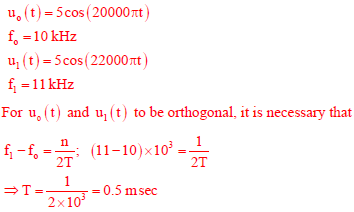

Q2. The frequency response of a linear, time-invariant system is given by  The step response of the system is
The step response of the system is
 The step response of the system is
The step response of the system is
Answer : Option B
Explaination / Solution:
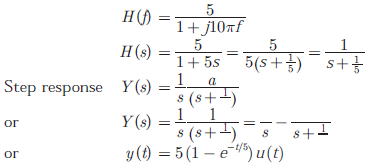

Q3. Let X(t) be a wide sense stationary random process with the power spectral density SX(f) as shown in Figure (a), where f is in Hertz (Hz). The random process X(t) is input to an ideal low pass filter with frequency response


As shown in Figure (b). The output of the lowpass filter is Y(t ).

Let E be the expectation operator and consider the following statements.
I. E( X(t)) = E(Y(t))
II. E( X2(t)) = E(Y2(t))
III. E(Y2(t)) = 2
Select the correct option:
Answer : Option A
Explaination / Solution:

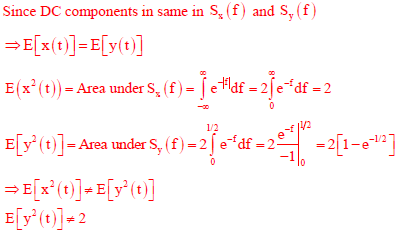


Q4. The z −transform X(z) of a sequence x n is given by X  It is given
that the region of convergence of X(z) includes the unit circle. The value of x is
It is given
that the region of convergence of X(z) includes the unit circle. The value of x is
 It is given
that the region of convergence of X(z) includes the unit circle. The value of x is
It is given
that the region of convergence of X(z) includes the unit circle. The value of x is
Answer : Option B
Explaination / Solution:
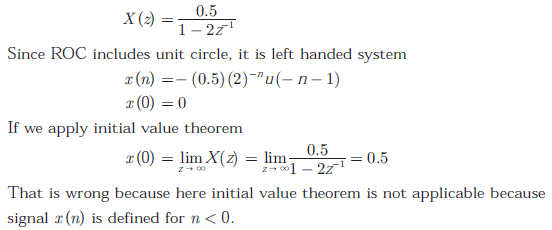

Q5. A half wavelength dipole is kept in the x-y plane and oriented along 450 from the x-axis. Determine the direction of null in the radiation pattern for 0 ≤ ϕ ≤ π. Here the angle θ (0 ≤ θ ≤ π) is measured from the z-axis, and the angle ϕ (0 ≤ ϕ ≤ 2π) is measured from the x-axis in the x-y plane.
Answer : Option A
Explaination / Solution:
The null occurs along axis of the antenna which is θ = 900and ϕ= 450
Q6. Consider the signal  where
where  denotes the Hilbert transform of m(t) and the bandwidth of m(t) is very small compared to fc. The signal s(t) is a
denotes the Hilbert transform of m(t) and the bandwidth of m(t) is very small compared to fc. The signal s(t) is a
 where
where
Answer : Option C
Explaination / Solution:
We have the signal,


Here, s(t) represents SSB - Lower side band, and thus a band pass signal.
Q7. Consider a linear system whose state space representation is x(t) = Ax(t). If the initial state vector of the system is  then the system response is
then the system response is  If the itial state vector of the system changes to
If the itial state vector of the system changes to  the system response becomes
the system response becomes 
 then the system response is
then the system response is  If the itial state vector of the system changes to
If the itial state vector of the system changes to  the system response becomes
the system response becomes 
The eigenvalue and eigenvector pairs (λivi)for the system are
Answer : Option A
Explaination / Solution:
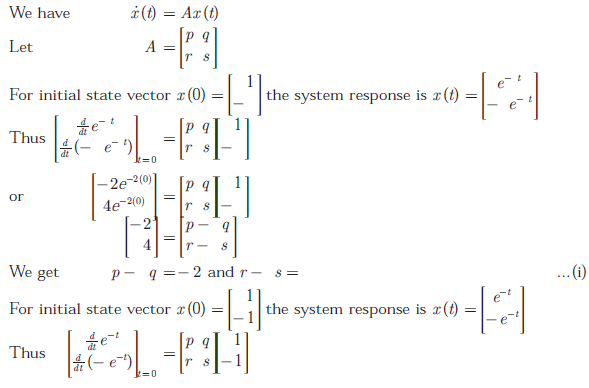
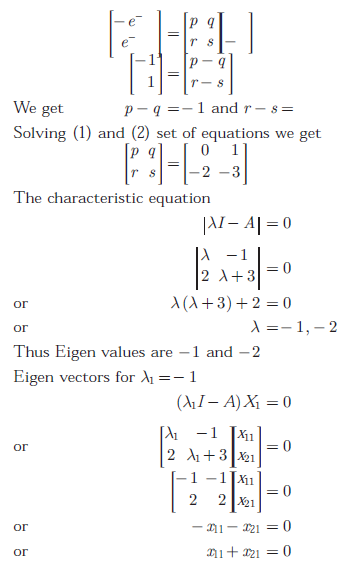
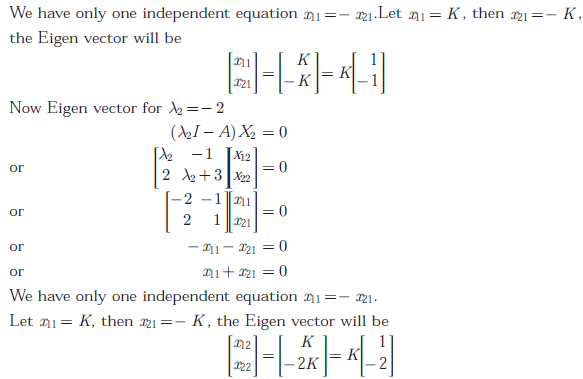



Q8. A sinusoidal signal of 2 kHz frequency is applied to a delta modulator. The sampling rate and step-size Δ of the delta modulator are 20,000 samples per second and 0.1 V, respectively. To prevent slope overload, the maximum amplitude of the sinusoidal signal (in Volts) is
Answer : Option A
Explaination / Solution:
For preventing slope overload, we should have
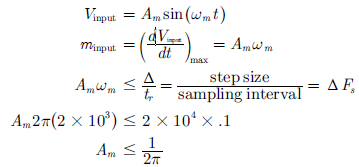
(slope of m(t) ≤ (slope of sampling)
For sinusoidal signal, if

Q9.
Consider a linear system whose state space representation is x(t) = Ax(t). If the initial state vector of the system is  then the system response is
then the system response is  If the itial state vector of the system changes to
If the itial state vector of the system changes to  the system response becomes
the system response becomes 
 then the system response is
then the system response is  If the itial state vector of the system changes to
If the itial state vector of the system changes to  the system response becomes
the system response becomes 
The system matrix A is
Answer : Option D
Explaination / Solution:
No Explaination.
Q10. The time domain behavior of an RL circuit is represented by  For an initial current of
For an initial current of
 For an initial current of
For an initial current ofFor an initial current of  the steady state value of the current is given by
the steady state value of the current is given by
 the steady state value of the current is given by
the steady state value of the current is given by
Answer : Option A
Explaination / Solution:
Steady state all transient effect die out and inductor act as short circuits and forced response acts only. It doesn’t depend on initial current state. From the given time domain behavior we get that circuit has only R and L in series with v0 Thus at steady state 

